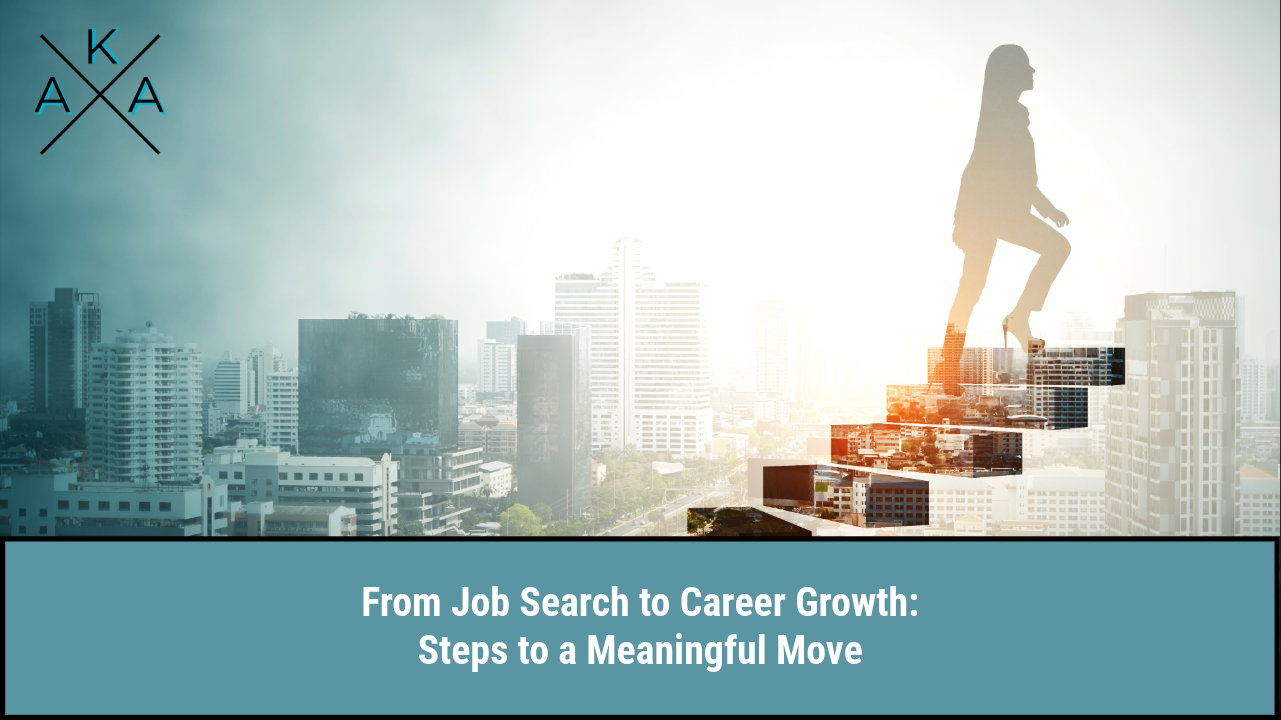During a call with a candidate last week, they said something that really made me think.
“I don’t just want a new job,” she said. “I want the right move.”
That’s the moment it clicked — there’s a big difference between job searching and making an intentional career move. Most people don’t realize that until they’ve jumped into a role that looked great on paper but didn’t feel right once they got there.
I’ve seen it hundreds of times. The excitement fades, the culture doesn’t click, and six months later, they’re back on the market wondering what went wrong.
And to be honest, it’s not always their fault. The whole system pushes people to move fast — click apply, interview, decide. But big career moves shouldn’t happen on autopilot.
The Job Hunt Trap
Let’s be real — when you’re looking for a job, especially if you’ve been laid off or burned out, it’s easy to fall into panic mode. You start applying everywhere that looks remotely relevant. You tell yourself, “I’ll figure out the details later.”
The problem is, later always comes.
I had a guy once who landed a job two weeks after he started searching. On paper, it was everything — salary bump, big title, nice office. Three months in, he called me back and said, “I made a mistake. I chased the job, not the fit.”
That one hit me because I’ve done the same thing in my own career. Sometimes we’re so focused on landing something that we forget to ask the harder questions — Does this actually align with who I am? Where I’m going?
A job search is about speed.
A career move is about direction.
And the two rarely mix well.
The Power of Slowing Down
This is going to sound strange coming from a recruiter, but:
Sometimes it’s okay to slow down.
We live in this world where people equate speed with success. Fill the role fast, accept the offer quick, keep the momentum going. But that’s also how people end up in the wrong seat.
When you take the time to pause — to think about what’s not working in your current situation and what actually matters next — the whole process changes.
I had a candidate once who told me, “I’m saying no to everything for the next 30 days.” At first, I thought she was crazy. But she was serious. She wanted clarity before commitment.
A month later, we found her something that checked every box. She said it was the first time she’d ever felt fully aligned with her work.
That’s the thing about slowing down — it’s not about hesitating, it’s about protecting your long-term energy.
Ask the Questions Most People Don’t
When you’re thinking about a career move, don’t just ask about pay or perks. Ask about the stuff that affects your day-to-day life — leadership style, team dynamics, how decisions actually get made.
I’ve seen candidates light up when they talk to a manager who communicates the way they do. I’ve also seen people walk away from six-figure offers because the company’s culture just didn’t feel right.
And I respect that.
Ask things like:
- “What does success look like in this role six months from now?”
- “How does your team handle conflict or feedback?”
- “What’s one thing you wish your company did better?”
You learn a lot more from those questions than you ever will from a benefits sheet.
Because a great job doesn’t just check boxes — it fits your rhythm.
The Recruiter’s Role in the Shift
Here’s something people don’t always realize: a good recruiter isn’t just trying to place you. They’re trying to position you.
There’s a big difference.
When someone tells me they’re ready for a change, my first question isn’t, “What’s your target salary?” It’s “What’s missing where you are right now?”
You’d be amazed how many people haven’t thought that through.
That’s where real recruiting happens — not in the placement, but in the alignment. It’s our job to slow you down when you’re moving too fast and speed you up when the right fit shows up.
I had a candidate once who was hesitant about taking a call with a client. She said, “It’s not the exact title I’m after.” I convinced her to talk anyway. Two weeks later, she accepted.
She told me it felt less like a job change and more like a step toward the life she actually wanted.
That’s the magic of alignment — you stop chasing, and start choosing.
The Fear of Getting It Wrong
Here’s what I’ve noticed — most people don’t fear change itself. They fear regret.
They’re afraid of leaving something stable for something uncertain. And I get that. I’ve been there myself. But staying stuck because you’re scared is its own kind of risk.
The truth is, not every move will be perfect. Some will stretch you, some might even sting. But the wrong job can still teach you what you don’t want. The key is not letting fear make your decisions for you.
I tell people all the time:
Don’t make career choices from panic or pressure. Make them from clarity.
Because when you know what you value — and you stick to it — you’ll stop needing every move to be perfect. You’ll just need it to be right for now.
What I’ve Learned
After years of watching people switch jobs, switch industries, switch entire careers — the pattern’s always the same.
The ones who end up the happiest didn’t just take a job. They made a move.
They said no to things that didn’t fit. They asked real questions. They trusted timing instead of chasing it.
They approached their career like a partnership — something to invest in, grow with, and stay committed to over time.
And honestly, that’s what most of us are chasing, right? Work that feels meaningful, steady, and a little more human. Something that lasts.
If you’re in that in-between space — wanting change but nervous to make the leap — remember: a career move isn’t just about leaving something behind. It’s about moving toward something that fits who you’re becoming.
Take your time. Ask questions. Stay connected.
Because when you move with intention, you’re not just landing a new job — you’re building your future.


